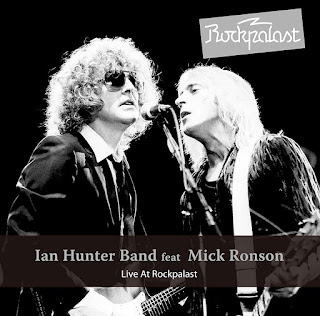Also unlike his fellow string-benders, Bull largely eschewed the traditional three-to-four-minute pop song format in favor of extended instrumental jams that would allow him to stretch out like an improvisational jazzman and get to the heart of the performance, providing his breathtakingly intricate compositions with greater texture and tone. Bull would also pick up a bass guitar, banjo, and oud once in a while, his proficiency in these various instruments lending a dangerously-exotic vibe to his compositions.
Signing with the noted folk label Vanguard Records, Bull released a handful of albums circa 1963-72, the most acclaimed of these, his 1963 debut Fantasias for Guitar and Banjo, recorded with jazz percussionist Billy Higgins (who had played with Ornette Coleman, John Coltrane, and Herbie Hancock, among others). Featuring the twenty-minute, side-long “Blend,” the album featured Bull’s myriad of influences and introduced him as a serious, talented musician. But by the time of the release of 1972’s Demolition Derby, Bull had sunk deeply into drug addiction, and he seemingly disappeared from music altogether until resurfacing in 1988 with the acclaimed Jukebox School of Music album.
Sandy Bull & the Rhythm Ace’s Live 1976
The truth is, Sandy Bull hadn’t turned his back on music during the
1970s, and after going through rehab, he relocated to San Francisco and began
performing again, including the May 1976 appearance opening for Leo Kottke at
the Berkeley Community Center that is captured by Live 1976. Remastered
from a long-lost tape made by friend and engineer Hillel Resner, Drag City’s
vinyl-only release of Live 1976 shines a light on Bull’s enormous
talents with a set of performances and soft-spoken intros that paint a fuller
portrait of this unfairly obscure instrumentalist.
Accompanied by
“The Rhythm Ace,” his electronic drum machine, and a four-track TASCAM
recorder on which he would often place backing bass and drums to accompany his
live lead instrument, Bull displayed the technological acumen of a prog-rock
virtuoso while unfolding his largely acoustic-based, dream-like compositions.
Live 1976 opens with “Oud,” a seven-minute-plus instrumental performed
with the pear-shaped Middle Eastern stringed instrument that Bull had come to
favor. The performance is simply magical, mesmerizing in its depth and tone as
Bull explores several varying musical landscapes within the confines of the
song.
A brief interlude follows where he jokingly introduces “the
band” and demonstrates the abilities of “The Rhythm Ace,” a still-unfamiliar
bit of technology in the mid-1970s. With “Love Is Forever,” Bull tries his
hand at a more-traditional, albeit elongated pop song, his imperfect but
aching vocals accompanied by elegant acoustic fretwork, the drum machine, and
syncopated riffing on an electric oud. Inspired by the Drifters, Bull
introduces “Driftin’“ as a “beach tune,” a pre-recorded bass line providing
support beneath Bull’s spry, soulful guitarplay that weds an odd folk-rock
sound to a lofty R&B framework, with a little weepy country steel twang
laid in on top as an exciting counterpoint.
Alligator Wrestler
Bull’s humorous introduction to “Alligator Wrestler” explains the
childhood interlude with the song’s protagonist and veers off course into a
story from his rehab before tying it all together with a nice bit of metaphor.
The song itself is an energetic, upbeat instrumental that evinces a swamp-rock
vibe, adding a loping, funky rhythmic track with heavy bass and some of the
oddest, Southern-styled chicken-pickin’ that you’ll ever hear. Running nearly
nine-minutes, the performance is exhausting and awe-inspiring, and is the
beating creative heart of Live 1976.
The album ends with
“New York City,” the performance falling just shy of eight minutes and
displaying a more urbane, sophisticated edge to Bull’s playing than previous
tracks. The guitarist’s nimble licks are paired with a jazzy, syncopated
rhythm resulting in an inspired piece that easily places Bull alongside such
vaunted contemporaries as Larry Coryell and Al Di Meola as a skilled
jazz-fusion stylist.
While continuing to perform, often outside of
the public’s eye, throughout the 1980s, Bull would eventually land in the
rural countryside near Nashville, building a home and studio and raising a
family. He would return to the recording world with the aforementioned
Jukebox School of Music, followed by 1991’s Vehicle, and 1996’s
Steel Tears, both albums released on his own independent Timeless
Recording Society label, all three treated with deference by critics.
The Reverend’s Bottom Line
Although passing away in 2001 at the too-young age of 60 from cancer,
Sandy Bull left behind a body of work that, while not large by contemporary
recording standards, nevertheless represents the best qualities of his playing
– creative, efficient, meticulous, imaginative, and adventuresome.
Live 1976
is a welcome addition to this catalog that serves to bolster Bull’s growing
reputation, the album a warm and entertaining collection that reveals another
dimension of this underrated instrumentalist’s enormous talents. (Drag City
Records, released February 8, 2012)
Review originally published by
Blurt magazine






